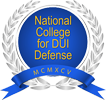Understanding Federal Child Pornography Laws
The topic of child pornography is a serious and sensitive issue that’s governed by stringent laws in the United States. These laws are designed to protect minors and punish those who exploit or harm them through the creation, distribution, or possession of illicit material. Here, we aim to demystify the federal legal framework surrounding child pornography, offering clear and accessible insights into what these laws entail, the penalties involved, and the avenues for legal defense.
Legal Definitions and Prohibited Actions
Under U.S. federal law, child pornography refers to any visual representation of sexually explicit conduct involving a minor, defined as anyone under 18 years of age. This broad category includes:
- Photographs and videos
- Digital or computer-generated images that cannot be distinguished from real minors
- Images created, adapted, or modified to appear as if they depict an actual minor
It is important to note that the possession, production, dissemination, and reception of child pornography are all illegal actions, subject to severe penalties.
Key Federal Statutes
Several major federal statutes form the backbone of the legal fight against child pornography, including:
- 18 U.S.C. § 2251: Prohibits the production of child pornography.
- 18 U.S.C. § 2252: Outlines the illegality of possessing, distributing, and receiving child pornography.
- 18 U.S.C. § 2256: Provides a detailed definition of what constitutes child pornography under federal law.
- 18 U.S.C. § 2252(a)(4): Specifically makes it a criminal offense to knowingly possess child pornography.
- 18 U.S.C. § 2260: Prohibits the international production, receipt, transport, or distribution of child pornography with the intent of importing it to the United States.
Penalties for Violations
The consequences of violating federal child pornography laws are severe, designed to reflect the seriousness of these crimes. Some of the penalties include:
- Production: First-time offenders could face between 15 to 30 years in prison.
- Transporting: Involves penalties of five to 20 years for first-time offenders.
- Possession: Holding explicit images of minors can lead to up to 20 years in prison, depending on the age of the individuals depicted.
- Supervised Release: Following imprisonment, offenders are generally required to undergo a minimum of five years of supervised release.
Penalties escalate for repeat offenders or if the offense involves aggravated circumstances, such as the depiction of violent or abusive acts.
Jurisdiction and Federal Reach
Federal jurisdiction generally covers offenses that occur across state lines, internationally, or via the Internet. This means that even if an image does not physically cross state or national boundaries, the use of the Internet as a medium for committing or facilitating the crime typically brings it under federal purview.
Legal Defense and Representation
If someone is accused of federal child pornography charges in Ohio, it is crucial to seek experienced legal representation immediately. Youngstown Criminal Lawyer is equipped to provide robust defense strategies, ensuring that the rights of the accused are fully protected throughout the legal process.
Youngstown Criminal Law Group, specializing in federal child pornography defense, covers areas including Youngstown and surrounding counties, offering consultation services for those in need.
The Importance of Legal Awareness
The laws surrounding child pornography are complex, reflecting the gravity of these crimes against minors. Whether you are a legal professional, a student, or simply a concerned citizen, understanding these laws can contribute to broader efforts to protect vulnerable populations and uphold justice.
Defending Against Charges of Federal Child Pornography
When faced with accusations of federal child pornography, there are several defense strategies that may be considered. These strategies are designed to address the charges directly and include:
- Acting in Good Faith: A claim that there was no intent to engage with or distribute child pornography.
- Questioning the Material: Arguing that the material in question does not actually constitute child pornography as legally defined.
- Unintentional Possession: Demonstrating that any possession of the material was accidental and not intentional.
- Legitimate Purposes: Showing that the material was used for educational or scientific reasons, which can sometimes offer legal protection.
Additional Support Resources
For victims and those seeking more information on combating child pornography, there are valuable resources available:
- F.B.I. Child Pornography Victim Assistance Program (CPVA) – Acts as a central point for details on recognized victims shown in child sexual abuse materials. Through the use of the D.O.J. Victim Notification System, the CPVA aims to protect victims from further trauma by minimizing direct contact unless necessary.
- National Children’s Alliance Learning Center – Provides tools and resources to meet the needs of child abuse imagery victims, including those affected by child sexual abuse materials and child pornography.
Legal Assistance in Ohio for Federal Child Pornography Charges
Facing charges of federal child pornography in Ohio brings a time of significant stress and uncertainty. Securing a Youngstown criminal lawyer with extensive trial experience is crucial. At Youngstown Criminal Law Group, we grasp the gravity of your situation. Our goal is to diligently work towards mitigating or completely dismissing your charges.
To explore your defense options and understand how Youngstown Criminal Law Group’s comprehensive experience in protecting Ohio residents’ rights can assist during such a critical moment, get in touch with us.
Youngstown Criminal Law Group is here to support clients Mahoning County
Contact us at Youngstown Criminal Law Group or call on (330) 992-3036 to initiate a conversation about your legal rights, potential defense strategies, and how our years of dedicated service can contribute to your case during these challenging times.








